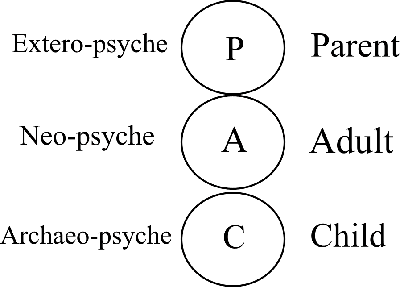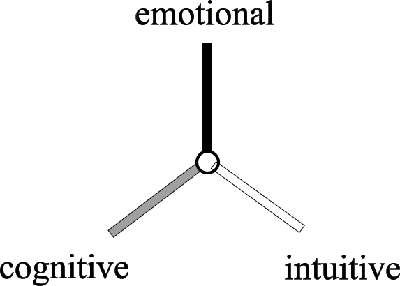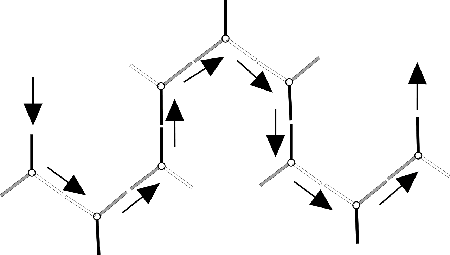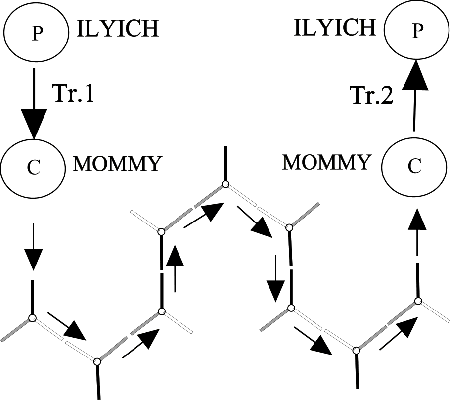Methodology
of Survey Design for Inter-cultural
Sexological Investigations
Rehabilitation Dept.,
Moscow, Russia
Synopsis
1. Introduction
2. The systematic approach, and the development
of the ecological model
3.
Problems with studying sexual attitudes
4. Individual behavior and its social regulation
5. The inter-relation of
'quanta' and semantic groups
6. Systemic architecture and the structure of the
quantum
7. Elements of
semantic composition
8.
Methods of survey design
9.
Conclusion
10. References
Synopsis
The
theory of functional systems, and the methodology for
questionnaire-design for sexological investigations are designed to
further the development of the ecological model of sexuality.
A survey must meet two requirements - it must
correspond to the ecological model, and it must serve to reveal the
quanta of typical behavioral patterns. The sexological categories
included in the questionnaire must, therefore, reflect both social and
personal factors. With this in mind, we can turn to the categories
postulated in E. Burn's theory. Fundamentally, the quanta of
typical sexual behavior have both cognitive and emotional content, and
also fulfill a prognostic, or anticipatory function (the intuitive
component).
To identify all these factors in the
cases of individual respondents, we use semantic compositions, which,
like the quanta themselves, include all three elements.
This methodology greatly widens the scope of sexological investigation.
1. Introduction
Sexual attraction is a biologically determined motivation, which expresses itself in goal-oriented organization, and subtle differentiation of behavioral patterns. These behavioral patterns can be studied using direct empirical observation, or through the use of opinion surveys. Surveys are conducted with the use of questionnaires, which form the basis for all psychological testing. Any questionnaire will be accepted differently by members of different social groups, activating in each respondent different semantic links. The psychological method used in designing the questionnaire must filter out social and cultural interference - the words, terms, and connections (usually logical connections) used in the questionnaire must be familiar to the respondent [1]. A questionnaire is not a test, and there are methodological limitations to the use of questionnaires in sexology. Questionnaires, however, still have great value, in that they allow the sexologist to quickly gather the necessary information about particular social groups.
It is widely held that with an increase in the level of intimacy of the questions, the number of 'no response' answers will also increase. The better the contents of a questionnaire relate to the opinions and problems of the respondents, the more likely the respondents are to reply thoughtfully and honestly [ 9, p.107 ].
Often, to compensate for inadequacies in the design of the questionnaire, specialists pay extra attention to the accurate use of sexological terms. The investigation thus orients itself towards bringing the respondent's categories of thought in line with those of the researcher. Exactly what mental connections the respondent is making when he answers the questions remains a mystery. For this very reason, questionnaires are often thought to be a less useful investigative tool than face-to-face interviews. If the questionnaire is properly designed, however, with the correct methodological requirements in mind, its possibilities can be extensive. The methodological requirements are defined by Anokhin's theory of functional systems, an important work to the ecological model of sexuality.
2. The systematic approach, and the development of the ecological model
The ecological model explains sexuality as, on the one hand, the result of the biological and physiological state of the organism, and on the other, as a process of learning and experience [5]. This model allows a broad-based discussion of sexuality, uniting its reproductive and recreational functions, and viewing the individual in terms of his membership in bio-social groups, which vary in their outlooks on sex and reproduction. The Russian School of Sexopathology adopted a systematic approach to the investigation of sexual systems. The essence of their approach consists in evaluating the course of the copulative cycle of the patient, using specially worked out categories and taking into account the patients' sexual constitution [4].
A person's gender-role behavior operates on a wide spectrum, and results from the activity of brain systems. It both conditions and is conditioned by the process of socialization. It reveals itself in patterns of typical behavior which stem from underlying 'quanta,' mental programs, which have both 'wired-in' and 'dynamic' forms. These are the main categories postulated by the theory of functional systems [2,7].
The followers of Anokhin, studying the functional systems of the human organism, distinguished the results of various mental processes and formulated the principle of the systematic 'quanticization' of human behavior. The principle is that the entire continuum of human activity can be divided into discrete sections - 'quanta' - and that each section has a classical organization, as shown in the diagram. This special form of organization is known as the systemic architecture. It includes the mechanisms of afferent synthesis, decision-making, anticipation of results, efferent synthesis, and the constant evaluation of achieved effects, which operates through the system of reverse afferentation (the mechanism of reverse connection.) For the evaluation of results, there is a special structure called the acceptor of an action's results.
The structure of the functional system according to P.K. Anokhin
Behavior is seen as a series of discrete episodes linked in time and space and comprising a set of 'standard' elements. The essential nature of the elements and the sequence of their appearance in similar situations does not, in principle, change. This process is known as the 'quanticization of behavior.' 'Mental quanticization' is realized through a person's thoughts, emotions, forecasts of the future, and use of word-symbols.
Quanticization of behavior resulting from 'wired-in programming' is genetically determined (this type of quanticization includes innate patterns of behavior). Dynamic mental programming is characteristic of learned behavior, and to actions which happen under conditions of constant change. This process always runs alongside mechanisms of motivation, memory, stimulation, and the mechanisms which anticipate and react to events in the world.
A special feature of wired-in mental programming is that all the components of the quanta are genetically determined, and so the sequential activation of the quanta is realized without any special conscious understanding on the part of the subject. Dynamic programming is flexible, and is concerned with anticipating only the most significant results. Behavioral patterns stemming from dynamic programming involve the selection from the mass of available data only those data most closely linked to the subject's motivation. Information is rejected if it does not lead to the achievement of the foreseen result. All of the features of dynamic quanticization are present during the production of spoken and written language, so it is clear that if a survey is designed in the proper way, it's application will shed light on the respondents' quanta.
Typical patterns of gender-role behavior are specific to individual subjects and to social groups. They change under the influence of the norms and myths circulating in the social consciousness. As a result, an important characteristic of any social group is its 'movement.' The 'movement' of a social group can be identified through repeated analysis of their attitudes. The accepted sociological approaches to the study of people's opinions are not, however, appropriate to sexological investigations.
3. Problems with studying sexual attitudes
When designing a questionnaire, the specialist usually tries to write the texts so as to exclude the possibility of multiple interpretations, to avoid offending moral values, and to allow the respondent freedom to make mental associations and logical connections. These general principles suggest the use, wherever possible, of multiple choice questions. For example [9a, p.102]:
'I trust my partner.' I agree with this statement:
Completely.
With some reservations.
I don't agree.
The statement does not apply to me.
Turning our attention to the above, let us recall the general methodological demands for a questionnaire. Firstly, it must agree with the ecological model of sexuality - the categories included must relate to both personal and social factors. Secondly, the questionnaire must help to shed light on 'quanta.' The first is achieved by designing the text to employ Burn's theory of coherent feelings and sensations, occurring in three mental structures; the second by understanding the structure of quanta and the means of their semantic expression.
4. Individual behavior and its social regulation
With a view to developing the ecological model, let us define more exactly the social importance of sexological texts, using as an example Vatsaani Mallahahi's Kama Sutra. The translator notes that this is a scientific and didactic text, and that when studying it, we should pay special attention, first and foremost, to the distinctive Ancient-Indian scientific language, which is carefully crafted with systematic methods for description and enumeration, and equipped with highly specialized terminology for describing minute details. The style of Kama Sutra is characterized by nominative sentences and the use of wish-constructions, by terminological exactitude and consistency in the use of previously introduced terms, and by the wide use of synonyms [8]. The inclination of Ancient-Indian authors towards the scrupulous classification of reality is reflected not only in their theoretical discourse, but also in their artistic productions. They possessed a system of symbols in which expressive means were linked to definite objects, states, and virtues. Through these symbols, they were able to express in art and literature some unique ideas. A significant part of Ancient-Indian teaching is concerned with three types, or orientations of human activity:
Dharma
- the totality of social, familial, and religious
obligations, which affect a person's behavior.
Artha - the acquisition and use of material possessions
Kama - the sphere of emotional, sensual life.
This system with three principles, has helped many generations of Indians to make sense of and to order their activities in life. At the same time, Dharma, Artha, and Kama did not always relate so much to different activities, but rather to different ways of looking at one and the same activity - evaluating it in ethical, pragmatic, and hedonistic terms. It was traditionally held that these three elements should be kept in harmony, so that none of them had a greater weight than any of the others. If we compare the Indian categories of Dharma, Artha, and Kama with the categories (extero-, neo-, and archaeo-) used in Burn's description of the human psyche we find some striking parallels (table 1):
Table 1
Parallels between Burn's Categories and Ancient-Indian philosophy
| Structure of the Psyche (sub-personal structure) | Personality Structure | Type of Activity (meta-personal structure) |
|
Extero-psyche |
Parent |
Artha |
| Neo-psyche |
Adult |
Dharma |
| Archaeo-psyche |
Child |
Kama |
As Burn stated, the different personality systems (diag. 1) react differently to stimuli. The extero-psyche exerts a dogmatic influence, trying to force the other structures to adopt its judgments. It corresponds to the mental structure 'I am a Parent,' comprising the unity of feelings, manners, and models of behavior similar to those of parents. This structure manifests itself in various forms of habitual behavior, and systems of judgment which, though irrational, appear to the subject as reasoned, and have a proscriptive character [3].
Diagram 1 - Personality structure according to Burn
The neo-psyche transforms stimuli into units of information, analyzing and classifying these elements, and comparing them to previous experiences. The neo-psyche corresponds to the mental structure 'I am an Adult,' characterized by the aggregate of feelings, habits, and models of behavior connected with activity in the real world. The Adult is realized as an organized, adaptable, and reasonable person, who forms objective relationships with the outside world on the basis of real, independent experience.
The archaeo-psyche generates impulsive reactions not based on fully-formed understanding. The archaeo-psyche corresponds to the mental structure 'I am a Child,' characterized by the aggregate of feelings, habits, and models of behavior typical of an individual's childhood. The Child is distinguished by independence of behavior, a tendency towards protest, and an inclination towards self-interested motivations.
In this way, it is possible to use the categories of structural analysis, intended for the study of the individual personality, to study the social and meta-personal structures which regulate an individual's behavior. We can use these categories to investigate the influence of sexual morality, ethical norms, taboos, and the specific features of families and other social groups (table 2).
Table 2
Personality structure in relation to a society's sexual culture
| Sexual Culture |
Personality Structure | Personality Structure in the sexual sphere |
| Sexual morality, laws, dogma, and religion |
P -- Parent | P - accepts without critical judgment, preaches ethics and morality |
| Scientific knowledge about platonic, erotic, and sexual love, and about reproduction |
A -- Adult | A - becomes acquainted with the world of the opposite sex, through experience of love and erotic behavior |
| Art, depicting sexuality |
Ch - Child | Ch - enjoys and is excited by the sexual and the erotic. |
It follows from all this that if a range of sexological categories are used on a questionnaire form, and that if the texts reflect ideas of duty, goal-directedness, and impulsivity, then the questionnaire corresponds to the ecological model of sexuality.
When designing the questionnaire form, the sexologist tries to reflect information relevant to his profession. The text itself, though, must be comprehensible to a respondent who is not a specialist. In this there is a certain conflict, which, however, can be resolved if we use the correct semantic structures to shed light on the quanta.
5. The inter-relation of 'quanta' and semantic groups
Let us recall the basic postulates of Anokhin's theory of functional systems:
The result of activity is the primary
system-forming factor.
Self-regulation is the
system's general organizing principle.
Functional
systems are isomorphic at different levels.
Individual
systems are capable of elective mobilization and cooperation to achieve
a mutual end result.
Functional systems are ordered
hierarchically.
The activity of the system for achieving a
particular end result is regulated by many parameters.
Let us postulate that the quantum of a dynamic set of typical behavior has an engram in the memory, which is the result of acquired experience. Without experience, there is no quantum. The chain of inter-connected engrams corresponds to the chain of quanta and these structures form the basis of behavioral patterns. Underlying typical patterns of behavior is a process that starts with a triggering stimulus that provokes one mental event, which, when concluded, induces the next. If even one of the links in the chain is not realized, then the development of the behavioral pattern ceases. Put another way, the emergence of sexual behavior is realized through a dynamic process, the basis of which is the sequential induction of a chain of engrams. The engrams are actualized under the effect of various types of stimuli, and also by the subject's memories and fantasies, and when the subject is engaged in communication or reading. The constellation of quanta corresponds to the set of semantic constructions used in acts of spoken and written language.
The semantic content of quanta varies according to the breadth of the spoken language, or more accurately, the part of spoken language actively employed by the subject. The following excerpt of dialogue, borrowed from a literary text, is an example of erotic communication from a 'Parent' man, with the induction of a 'Child' woman [6. c.118].
Quantum 1:
ILYICH (arranging his beard and filling his pipe) The boy needs it! It's time! A child has to know about love! You've never thought about it even once? That he's probably already masturbating? It's not a good idea in our day and age. American ballistic missiles have blocked out the woman's … ! Reagan said he'd destroy the whole female population of the USSR in 5 minutes. He wants men to have hanged.
Quantum 2:
MOMMY But he's still a child! He's still a child! He's still a child! I won't let you use that word around children.
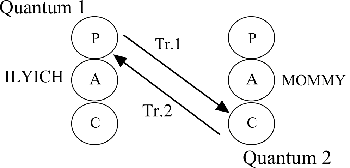
Diagram 2
In his mental structure, the 'Parent' Ilyich (diagram 2) realizes Quanta 1 and carries out a communicative transaction (Tr. 1) directed at the structure of Mommy, the 'Child.' The direction of his communication is determined by the semantic contours of Quantum 1. In response, the personality structure 'Child' (Mommy), generates Quantum 2, directed (Tr. 2) at the structure of 'Parent' Ilyich. The direction of this communicative act is also determined by the semantic structure of Quantum 2. These communicative transactions supplement each other. The quanta differ in their emotional import. Let us note that the quanta have both emotional and cognitive content. To identify their third component we will turn to a description of the structure of the functional system.
6. Systemic architecture and the structure of the quantum
A quantum, by definition, is a functional system comprising a 'triggering stimulus,' central integration, and an acceptor which anticipates potential results. To connect the classical understanding of the system with the understanding of its cognitive and emotional aspects, it is necessary to uncover a general factor which at once both accurately describes mental activity, and also corresponds with the theory of functional systems. This factor is that of prognosis, or anticipation, since it is clear that in any communicative act, besides the linguistic meaning of its words, and their emotional import, there is also a communicative goal which the subject is trying to achieve. So it is worthwhile to look at the quantum, and at mental activity in general as the aggregate of three functions: cognitive, emotional, and anticipatory (this last is not always conscious, and is often expressed subjectively as a wish, a goal, or an expectation of some result.)
Diagram 3 The structure of a quantum
And so, a quantum is the product of the cognitive and emotional activity of the brain, and also of the brain's activity in anticipating an action's possible results. For convenience, we will use the label 'intuitive' to describe the activity of anticipation. A quantum, then, consists of cognitive, emotional, and intuitive components (diag. 3).
Diagram 4 The constellation of Quanta
Quanta are linked to each other in three different structures (see diagram 4.) The 'entrance' to the quantum is denoted by the arrow on the left - the induction by some communicative transaction of a quantum's emotional component. The link to another quantum is realized through the intuitive component. The induction of the second quantum leads to the formation of a new link with the third, cognitive, component, and so on. We see, therefore, a three-faceted dynamic process, producing a 'response stimulus' as its end result.
From the free positions of individual quanta in this chain, stimuli can be directed to other personality structures, to emotional mechanisms, or 'below' - to activate the corresponding nuclei and nerve-centers, provoking the vegetative reactions which accompany communication.
In the case of sexual intercourse, the part of the brain governing sexual behavior is activated, and the mechanisms of 'sexual reaction' are 'triggered.' Depending on the specifics of a subject's neuro-dynamics, the number of activated engrams varies according to the level of thinking, the quality of the emotional content, and to general sexual behavior. Clearly, the higher the level of the functional system in the hierarchy, the more closely the quantum will correspond to its understood form.
Let us
clarify then, that the element governing typical patterns of sexual
behavior is the fixed hierarchical structure of quanta within the
personality structures 'Parent,'
'Adult,' and 'Child.' The
interrelation of a series of quanta, and of the communicative
transactions and personality structures that they invoke is shown in
diagram 5.
Diagram 5: The interrelation of personality structure, communicative transactions, and quanta
It is obvious that to make insights into the nature of quanta, we must use semantic compositions which allow the respondent an open choice. The semantic compositions must correspond to the structure of the quantum, and include its three elements.
7. Elements of semantic composition
To clarify, the chain of quanta is activated during communication, the individual units of which are called transactions. Transactional interactions are concrete, and they form the basis of the 'fabric' of communication. A transaction is a connection which has qualitative characteristics. It is not possible to apply a personality category to a transaction outside of a communicative context. A 'quantum' is the place where a transaction is applied; it has as its structural basis engrams, and is active during the process of communication, and remains in place after its conclusion. It is possible to apply a quantum to a particular personality category outside outside of communicative context. To do this, we must design a semantic group so that it consists (as does the quantum itself) of the three elements (cognitive, emotional, and anticipatory). If this is done, the semantic group will reflect the respondent's corresponding mental processes (on the condition, of course, that the respondent has the necessary engrams).
A 'semantic composition' is a set of statements with defined parameters. On the one hand, it enables the revelation of the respondent's quanta, and on the other, the semantic group reflects the categories under investigation. As a result, the semantic construction is a link between the researcher's ideas about a particular behavioral pattern, and the actual nature of this pattern, as realized by the respondent. In any case, a 'semantic composition' is the factor which differentiates respondents according to the specifics of their sexual experiences.
So all that remains is to construct the sentences and assign to them the correct parameters.
The first element of a composition is the concrete information which the respondent has to process cognitively. This is the linguistic meaning of the statement or question. The second element is the emotional content - statements and questions are designed with a certain emotional shading. Finally, the third element is the general structure of the parameters, which the respondent usually does not consciously consider when completing a questionnaire form. The mental processing of the general parameters induces in the mind of the respondent some intuitive components, corresponding to the structure of 'quanta'. This is because reflection on past experience is carried out through a process of 'reverse anticipation' - the memory is activated, and the respondent decides which of the statements corresponds maximally to his own experience. If the respondent does not have the relevant experience, induction does not occur, and the respondent answers accordingly, ticking, for example, the box marked 'It is difficult for me to answer.'
8. Methods of survey design
The general principles for survey design are simple: three types of information can be included to help draw conclusions about the respondent:
Objective,
non-parametrized information (gender, age, ethnic background, etc.)
Parametric statements which are not semantic groups
Semantic
compositions (sexological categories) designed within the
methodological framework
In studying human behavior in intimate areas, it is always necessary to take into account the dependence of such behavior on social groups, and on the individual's personality. It is also necessary to note that intimate behavior is usually connected with, and dependent upon the behavior of a partner [9b c. 74]. The creation of a particular investigative 'tool' always pre-supposes answer to the following questions: on what basis the questionnaire is designed, and in what manner, and with what aim the survey will be carried out. So, before designing the questionnaire, one should have a clear picture of who exactly will participate in the survey. This can be achieved by direct face-to-face communication. The question of methodology is answered in the above discussion, and the question of aim is, naturally, one for the investigators themselves.
As an illustration, we present below a list of five parametric statements (1-5) and two (6-7) which should be included in every 'semantic composition.' Five is the ideal number of choices because it is the minimum number that promises meaningful statistical results, and if there too many choices, then the respondent may have difficulty processing the general structure of the parameters, and the system of 'reverse anticipation' will not be activated.
Semantic Composition:
1. People must not discuss sexuality.
2. A person should discuss sexuality only with a specialist.
3. There are some themes which be should freely discussed, and others
which can be left alone.
4. We should talk about anything, as
long as the discussion benefits people.
5. It's so important
to talk about sex!
6. It is difficult for me to answer.
7. I do not wish to answer.
Positions 1, 2, and 3 correspond to the personality structure 'Parent' (the texts refer to duty), 4 corresponds to 'Adult,' and 5 to 'Child.' Position 6 is neutral and will be chosen if the respondent does not have the particular quanta. Position 7 expresses a negative attitude towards the survey process in general.
Authors can, of course, use their discretion to set up questionnaires in whatever way they choose, to reveal the structures 'Parent,' 'Adult,' and 'Child.'
9. Conclusion
In this way, on the basis of the theory of functional systems, used to develop the ecological model of sexuality, a model has been worked out to investigate sexuality with the use of surveys. When designing a questionnaire, it is necessary to define the factors you wish to analyze, and to express them using semantic compositions. After that, you can carry out the survey and subject the data to statistical analysis. This method will greatly help the specialist in his investigations.
10. References
1. Anastasi A. Psichologicheskoe
Testirovanie: Kniga 1. Perevod s angl. М.:
“Pedagogika”, 1982 - 320 p.
2. Anochin P.K. Uslovie mechanizmi
funkcionalnoi systemi kak apparata samoregulacii. - V knige
.: P.K. Anochin. Ocherki po fiziologii funkcionalnich system. -
Moscva.:„Medicina” - 1975 - P. 307 - 321.
3.
Bern E. Transakcionnii analis I psichoterapia. SPb.,
«Bratstvo», 1992 - 224 p.
4. Vassiltchenko G.S. Obshaja
Sexopathologia. Moscva.:„Medicina” - 1977 - 488 p.
5.
Imelinskiy K. Sexologia i Sexopathologia. -
Moscva.:„Medicina”- 1986 - 424 p.
6.
Radov E. Iskusstvo - eto kaif. V knige.: Eros, sin Afroditi.
Sbornic. Moscva.: ”Moscovskii Rabochii”, 1991
- 350p. P.117-122.
7. Sudakov K.V. Obshaja teoria
funkcionalnich system. Moscva.:„Medicina”- 1984 -
224 p.
8. Sirkin A.J. Drevneindiiskoe nastavlenie v lubvi.
Vstupitelnaja statija. V knige.: Vatsjajana Mallanaga
KamaSutra./Perevod s sanskrita. - Moscva: Vostochnaja Literatura, 1993.
- 182p.
9. Shtarke K., Phridrich V. Lubov I
sexualnost do 30 let: Perevod s nem. Moscva.: «Vishaja
Shkola», 1991 - 383 p.
9a. Shtarke K., Phridrich V. Lubov I
sexualnost do 30 let: Perevod s nem. Moscva.: «Vishaja
Shkola», 1991 - 383 p.
9b. Shtarke K., Phridrich V. Lubov I
sexualnost do 30 let: Perevod s nem. Moscva.: «Vishaja
Shkola», 1991 - 383 p.

